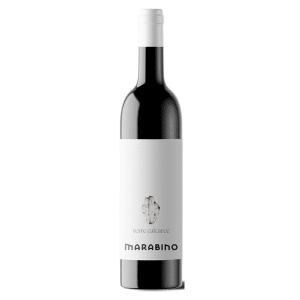Craft wine, the top buying guide
by Alessio Petito
The Ultimate Guide to Craft Wine.
Natural wine, biodynamic wine and organic wine, good for your health and the environment!!!
Do you want to know what artisanal wine is and how natural wine, biodynamic wine and organic wine differ?
You're in the right place but first I have to confess something, I made the worst mistake a man can make: I drank wrong.
Good news for you though. I changed my habit a long time ago, and in this article I will explain why craft wine, natural wine or biodynamic wine, are absolutely the best products to buy. You may not believe me, but despite being a professional sommelier, and having attended the Master of Wine in Rome, I have for years bought wines that now are not even worth buying.I wouldn't drink any more.
In the past I didn't pay much attention to a winery's idea of wine. I would just evaluate the product as a whole, identify the aromas and decline them, and that was my biggest mistake.
Taking that idea for granted, validating it.
What made me change my mind
Once, on an educational trip, I visited a great Italian winery, it looks great, magnificent structure, vineyards as far as the eye can see and a top notch restaurant.
Entering the vineyards, with the guides and with my fellow students, teachers and food and wine journalists, we came across a laborer.
I immediately noticed how the man in the tank top had a very severe rash on the left side of his body, all along his torso and arm.
The unfortunate man was there by accident as he was literally blown away by the guides in a matter of seconds.
Sustainability can be explained in one word: Respect, for the environment and for the agents that operate in it.
The laborer had the misfortune of working in a company that did not produce in a sustainable manner.
We were confronted by a vintner who bore the imprint of a... the effects of pesticides that were administered in the vineyards there.
From that day on, my view of wine from a certain type of viticulture has never been the same.
I had always wondered how these giant companies could sell, with adequate critical support, wines that were good on the palate and at a cost that was, all things considered, reasonable.
And that's the point, they are not good and the cost is high for the care given to that wine.
The artisanal wine, organic wine, natural wine or biodynamic wine, represents, with different nuances, the exact opposite.
Before I list the benefits that buying and consuming these types of wine bring to the wallet, the human body and the environment in which they are grown, I would like to dispel some of the clichés that this type of winemaking idea constantly faces.
These are the questions I hear most often on my social pages or via email:
- Why do they have such light colors?
- Why are many of these wines cloudy?
- They taste and smell really quite different from the wines I drink, what are they made with?
Not all artisanal wine, whether organic, natural or biodynamic, has light colors. It depends on the crushing during maceration and the polyphenolic extraction that the producer wants to imprint on that product.
A rapid pressing obtained from grapes that remain in contact with the skins for very little time or that have been cryo-macerated (frozen whole at -5) and then pressed makes it possible to obtain very light colors, always in relation to the variety used for the production of that wine.
Most of the wines produced in an artisanal way, which is also sustainable for the environment, come from vineyards that are not irrigated, except for aid. Irrigation dilutes the wine's aromatic qualities and its absence is a guarantee that no chemical interventions are carried out on the grapes.
They are cloudy because they are poorly, or not at all, filtered in order to preserve the body of the wine and the varietal characteristics of the grapes. Wines in nature clarify with cold.
The varietal characteristics of the grapes that are neither diluted nor filtered give the artisanal wine, organic wine, natural wine or biodynamic wine, peculiarities typical of that grape.
-
Promo

Ferdinando Principiano Langhe Freisa 2021
21,30 €19,70 € -
Promo

Il Sambuco* Malvasia Bianca di Candia 2021
18,00 €16,90 € -
Promo
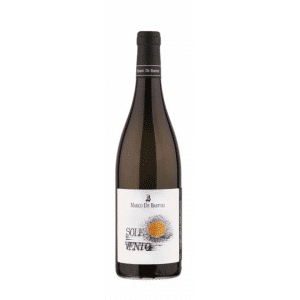
De Bartoli Sun and Wind 2022
18,00 €16,70 € -
Promo
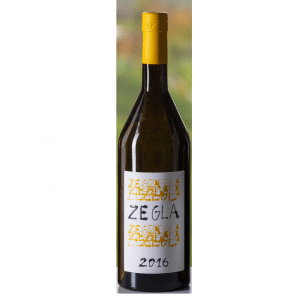
Blazic Pinot Bianco Collio Zegla 2018
25,00 €23,70 € -
Promo
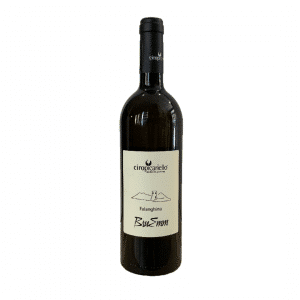
Ciro Picariello Falanghina Bru Emm 2022
14,70 €13,70 €
What is artisanal wine, and therefore what is meant by organic wine, natural wine and biodynamic wine?
You have to imagine artisanal wine as a whole that contains within it three subsets that represent three ways of approaching the vineyard and winemaking, respecting the environment, the operators and the end customer.
The amount of wine produced affects the categorization, especially in relation to the hectares available to the company, but normally is defined as artisan a company that produces less than 50,000 bottles per year.
Let's look specifically at these three subsets:
Organic Wine
Organic wine has certification, you recognize it right away, a green logo with stars representing the states of the European Union, and is obtained within it with products to 95% organic.
It is controlled from agricultural production to marketing, according to EU regulations, in the case of Italy, by the Ministry of Agriculture, Food and Forestry (MIPAAF).
The 60% of producers who produce organically do not in fact have certification, due to the cost and bureaucratic time of conversion, three years.
The minimum requirement is not to use chemical products in the vineyard and to contain a total sulphur dioxide level of 150 mg/litre for white wines and 100 mg/litre for red wines.
Even if it is not the practice, it is possible to produce organic wine using yeasts selected in the laboratory (I will explain shortly how they differ from the autochthonous yeasts), maintaining a controlled fermentation temperature and adding sulphites, which have an antiseptic and antioxidant function.
Biodynamic Wines
Biodynamic wine is produced in symbiosis with nature, with the phases of the moon and according to Rudolf Steiner's precepts concerning the restoration of the correct connections between heaven and earth. Certifications are still being defined at European level (Demeter International).
In biodynamics it is believed that the Moon in perigee (maximum proximity to the earth) has a negative and hardening effect, as opposed to what happens when it is in apogee.
In the vineyard, chemistry is eliminated and the use of tractors is limited, while the practice of green manure is encouraged (the introduction of leguminous plants into the vineyard which regulate the nitrogen levels in the soil).
Preparations are also used that trigger the processes of hummus formation, such as Preparation 500, the notorious Cornoletame, or that stimulate the functions of light and heat, as in the case of Preparation 501, Cornosilica. This is obtained from a mixture of quartz, feldspar and orthoclase, crushed, mixed with water and placed in a cow horn.
It is dispensed in very small quantities and has the function of processing the qualitative and organoleptic aspects of the product.
A peculiarity of biodynamic viticulture is that it creates a symbiotic system within the vineyard, often surrounded by walls similar to the French clos, whereby diseases are fought by the organisms themselves that populate the parcel of land.
Biodynamic wine is a pure expression of its land and its minerality, they are unique products, often very different from one vintage to another. They are wines totally aimed at environmental sustainability.
The trend in the winery is to abandon selected yeasts and controlled temperatures, in search of an increasingly real wine.
Natural Wines
Natural wine is obtained without any adulteration of the production process that includes the vineyard, the grape harvest and the cellar.
Mind you, these wines actually require very little human manipulation (harvesting, winemaking) so to define this category as natural is probably improper. I prefer to define them as respectful, genuine, true, sustainable and minimally manipulated. Without chemistry or laboratory yeasts.
Okay, maybe natural wines sounds better.
In the vineyard, only the use of copper sulphate is allowed, in very low quantities, as a pesticide and fungicide. In recent years many natural companies are experimenting with alternative treatments, even imaginative but not without logic or effectiveness, such as the use of lactic acid bacteria, orange juice or tannin from wood.
As mentioned, vines can only receive water when it rains, for the reasons explained above, with some exceptions related to a rather hot climate.
Harvesting is always manual, without using tractors in the vineyard, the vinification is clean, without adding sulphites and using selected yeasts.
In the skin of the grape, in fact, there are naturally found the sulfites which the wine needs. It is actually the yeasts that also produce sulphur dioxide when fermenting. Here the total sulphur dioxide is almost always below 50 mg/litre, in many cases it is around 20 mg/litre.
Conventional red wines contain 100 mg/litre and white wines 150 mg/litre, the limits have been lowered but the difference remains enormous.
Yeasts
The non-selected yeasts can be divided into wild yeasts, those of the grape cuticle, and the autochthonous ones, that is present in the cellar, where over the years a universe of self-selecting yeasts is composed.
In other words, wineries that purchase yeast in the laboratory will never have native yeasts. They will always have to use the Pied de Cuve technique, which triggers fermentation in a non-spontaneous manner.
This just described is the big difference between the two vinifications.
In conventional fermentation, the yeasts selected in the laboratory mechanically trigger the fermentation through the Pied de Cuve, while in natural fermentation, spontaneous fermentation is the result of the strength of the yeasts present in the cellar, which act independently.
The benefits of buying and consuming artisanal wine, organic wine, natural wine and biodynamic wine are many:
- Greater product quality. In fact, it is quite obvious that those who produce a few thousand bottles a year can use more care and love in producing them than those who seek turnover and hundreds of thousands of bottles. The strategy of seeking quantity is always to the detriment of the customer, as opposed to artisanal production, which is characterized by high production quality and low product quantity.
- They cost less than conventional mid-range wines.
- They are healthy wines because they respect you, they don't carry chemical pesticides that you then find in your glass and that can harm your health.
- They are genuine wines, without those stabilizers that give us migraines, widespread pain and irritation in the intestines.
- Normally, organically or naturally grown vines mature earlier, and this allows for a lower alcoholic extraction, with consequent, clear benefits for health and the figure. Less alcohol means less carbohydrates and less sugar.
- They are real wines, in the strictest sense of the term, a vine raised chemically, harvested mechanically and vinified with products almost always brings to the table artifacts and far from typicality.
- You are buying a product that not only respects you, but the entire environment, does not poison the soil, nor those who work in the vineyard.
I mean, I think you got the message.
We of Apewineboxes we share with you the passion for wine, we want to pamper you and make you drink well.
We have been working hard for over ten years to find the best artisanal wineries in the world and propose them.
We want to surprise you, make you happy and welcome you into our Family.
Remember, many of our wines and many other products are currently on promotion!
The Shop is waiting for you!
-
TerreVive Vino di Tutti 2019
14,70 € -
Marabino Rosanera 2022
15,30 € -
Marabino Clay Lands 2021
19,90 € -
Promo
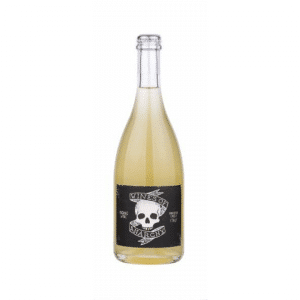
Cirelli Wines of Anarchy N.M.
12,60 €11,50 € -
Promo
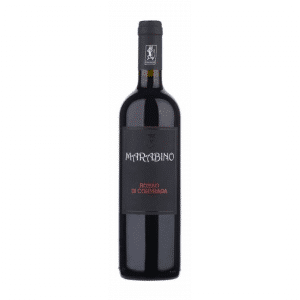
Marabino Rosso di Contrada 2018
14,70 €13,70 €



